language
Small Kyoto Morimachi, in the remote area. What is Ko Kyoto?
we will introduce about
history and background.
Since the Muromachi Period (1392 - 1573 A.D.), feudal lords in each region of Japan developed townscapes mimicking Kyoto, which is said to be the origin of all these Little Kyotos.
Currently, in a narrow sense, the name refers to towns which are members of the National Kyoto Council.
The National Kyoto Council was formed in 1985 by 26 municipalities including Kyoto itself, and it continues to host discussions of public relations as well as measures to revive culture for "Little Kyotos and towns with ties to Kyoto".
At the 4th general assembly in 1988, criteria were established for membership in the National Kyoto Council, and municipalities that meet at least one of them are approved at general assemblies.
Mori-machi joined in November in 2012, and even among the 49 member regions (as of January 2014), it is a truly representative "Little Kyoto" which meets all of the membership criteria.
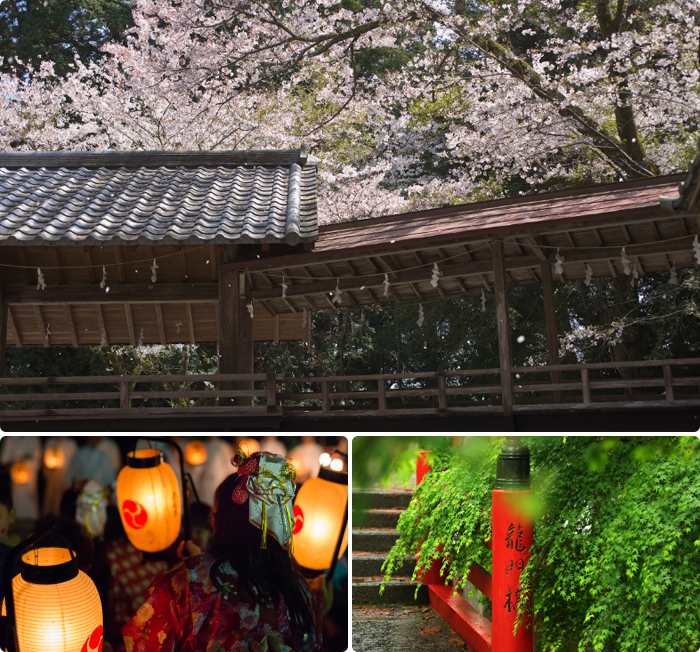
The poem goes "Surrounded by mountains on three sides, with plains spreading to the south.
The Ota River flows like a belt across the city, with a lively townscape on either bank. Shamisen and taiko drum songs, and lively songs alike, fade in and out of hearing over the babbling river.
Not every town has such scenery; it is unique to this 'Little Kyoto'." Shiga's poem is carried on to this day as the historical origin of Mori-machi's title of "Little Kyoto".
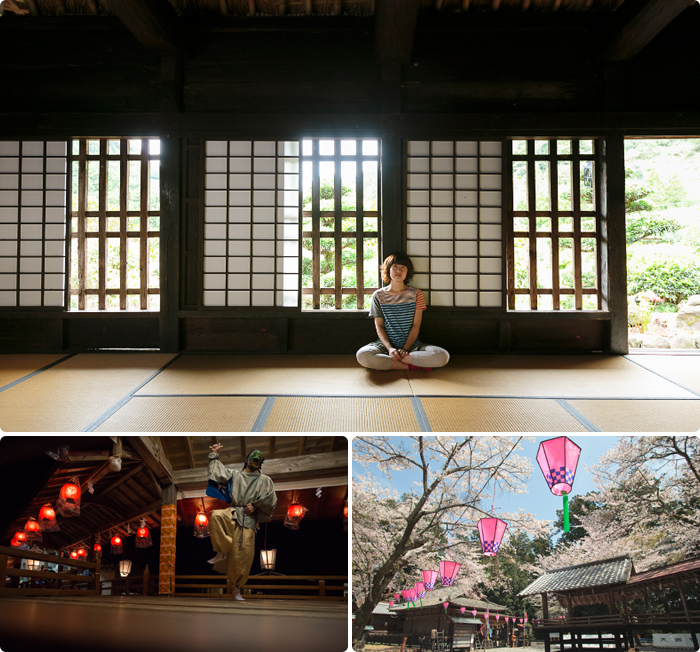
Since ancient times, Lake Biwa near Kyoto has been called "Omi" (the near
lake), while Lake Hamana far from Kyoto was distinguished as "Totomi" (the far lake), which then
became the name of Totomi Province.
The Tenryu River flowed throw the Enshu Plain, and Kokufu (formerly a provincial capital) was located at the tip of Iwatahara.
Mount Komyo directly north of Kokufu was established as a mountain shrine, with the venerated shrines of Mount Haruno and Mount Akiha on its east and west.
And in Mori-machi, the primary town on the Ota River, Ichinomiya Shrine (first shrine) was built and Ninomiya Shrine (second shrine) was built in Kokufu, along with Sannomiya Shrine (third shrine) in Fukuroi, at the base of Haranoya River.
In particular, the Ota River basin had been subdivided into districts similarly to Kyoto since ancient times, making for a rich living space blessed by nature.
Many historical Shinto shrines and Buddhist temples are located in Mori, and Totomi Ichinomiya (Okuni Shrine) is first among them.
With the central shrine of Ichinomiya at the peak, residences for the imperial court messenger, as well as Renge-ji Temple and Amenomiya Shrine were built around the base, and the Ota River was made to resemble the Kamo River in Kyoto, with Kamo Shrine and Yamana Shrine along its banks.
The town of Mori (Mori Ichiba) long prospered as a place to buy and sell food harvested from the mountains, the fields, and the sea, and performing arts from Kyoto were introduced as well, so the culture of Japan's historical capital has taken root here.
Twelve-stage bugaku (traditional music and dance) carried on by Okuni Shrine and Amenomiya Shrine came along with Buddhism from China to Totomi Province via Kyoto, and this thousand year old tradition is practiced even today.
Yamana Shrine Tenno Festival Bugaku is a precious performing art that brings the dances of the Kyoto Gion Festival to Mori-machi, and there are many other traditional performing arts remaining, such as the Mori Festival. Indeed, Mori-machi preserves many elements that together make it the "Little Kyoto of Enshu", and it has inherited many relics of history and culture in its Kyoto-like landscape, and traditions which are passed down from one generation to the next even now.
The Tenryu River flowed throw the Enshu Plain, and Kokufu (formerly a provincial capital) was located at the tip of Iwatahara.
Mount Komyo directly north of Kokufu was established as a mountain shrine, with the venerated shrines of Mount Haruno and Mount Akiha on its east and west.
And in Mori-machi, the primary town on the Ota River, Ichinomiya Shrine (first shrine) was built and Ninomiya Shrine (second shrine) was built in Kokufu, along with Sannomiya Shrine (third shrine) in Fukuroi, at the base of Haranoya River.
In particular, the Ota River basin had been subdivided into districts similarly to Kyoto since ancient times, making for a rich living space blessed by nature.
Many historical Shinto shrines and Buddhist temples are located in Mori, and Totomi Ichinomiya (Okuni Shrine) is first among them.
With the central shrine of Ichinomiya at the peak, residences for the imperial court messenger, as well as Renge-ji Temple and Amenomiya Shrine were built around the base, and the Ota River was made to resemble the Kamo River in Kyoto, with Kamo Shrine and Yamana Shrine along its banks.
The town of Mori (Mori Ichiba) long prospered as a place to buy and sell food harvested from the mountains, the fields, and the sea, and performing arts from Kyoto were introduced as well, so the culture of Japan's historical capital has taken root here.
Twelve-stage bugaku (traditional music and dance) carried on by Okuni Shrine and Amenomiya Shrine came along with Buddhism from China to Totomi Province via Kyoto, and this thousand year old tradition is practiced even today.
Yamana Shrine Tenno Festival Bugaku is a precious performing art that brings the dances of the Kyoto Gion Festival to Mori-machi, and there are many other traditional performing arts remaining, such as the Mori Festival. Indeed, Mori-machi preserves many elements that together make it the "Little Kyoto of Enshu", and it has inherited many relics of history and culture in its Kyoto-like landscape, and traditions which are passed down from one generation to the next even now.
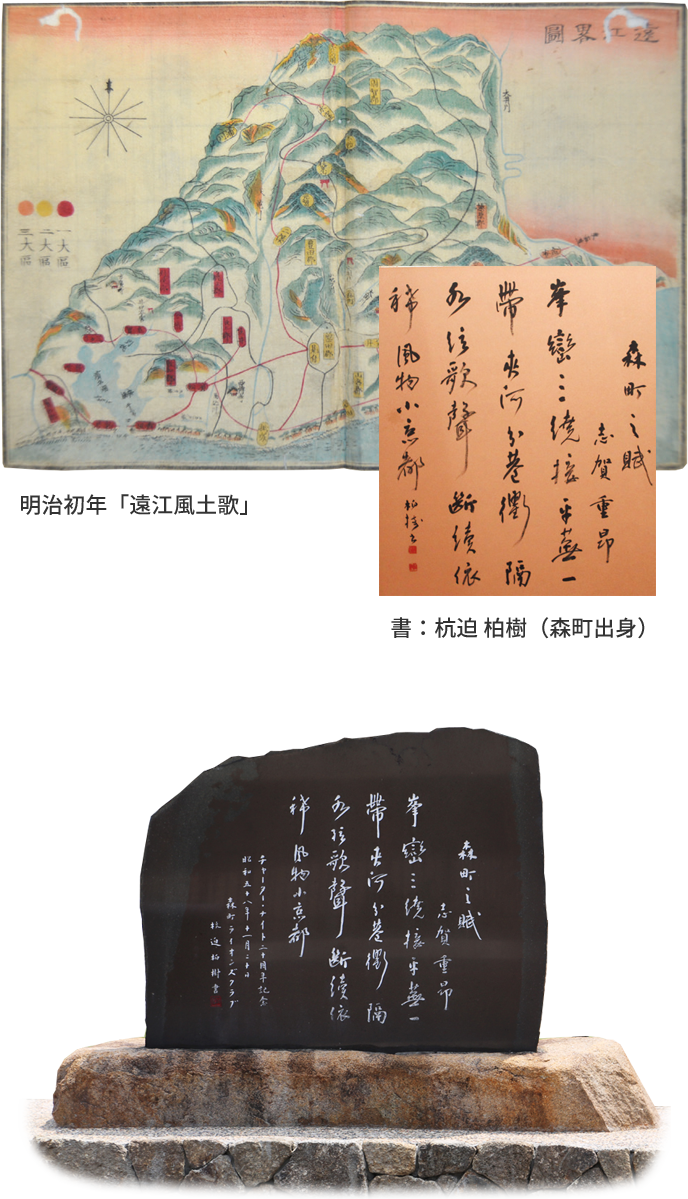
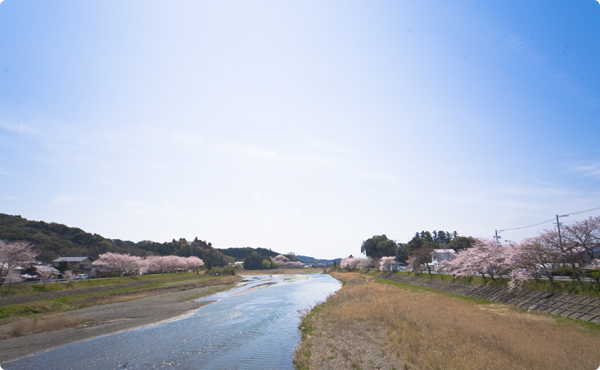
- Surrounded on three sides by mountains and the Ota River flows through the center
- In the center of town stands the market of Mori (the traditional townscape of Mori) just like Shijo and Gojo in Kyoto.
- Just like Mount Hiei in Kyoto, the mountains that feed the Ota River stand in the background, and Buddhist Temples and Shinto Shrines such as Kamo Shrine are arranged like in Kyoto.
- Viewing flowers including cherry blossoms, blue flag (iris), hydrangea, bellflowers, bush clover, as well as autumn leaves
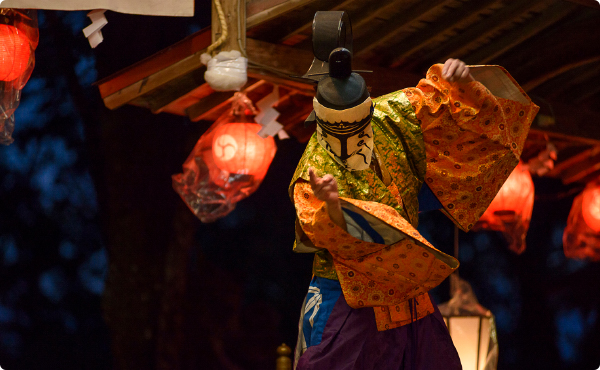
- Bugaku of Enshu Mori-machi
The bugaku (traditional music and dance) of Okuni Shrine and Amenomiya Shrine compose a paired left dance and right dance, and inherit the culture of Kyoto.
The bugaku of Yamana Shrine picks up the tradition of the Kyoto Gion Festival, and it carries on a precious performing art which has been abandoned by the Kyoto Gion Festival. - The Legend of Princess Sakura (Renge-ji Temple and Kyoto's Seikan-ji Temple)
- The Legend of the Three Squires of Sugawara no Michizane
- Okuni Shrine and the Ruins of Shoren-in Temple Gate
- Renge-ji Temple and Mount Hiei
- Amakata Michisue and the West Sanjo Clan
- Flags flown at on Otoko Saka (men's hill) in Mishima Shrine during the Mori Festival are made with flag cloth from a famous craftsman in Kyoto.
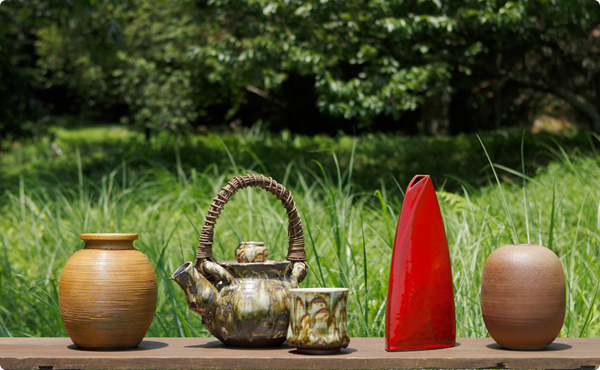
- Tea
- Moriyama Pottery
- Japanese confections including
- Traditional agricultural products such as Jiro persimmons
- The Three Bugaku of Enshu Mori-machi
- The Mori Festival
(The sound of someone practicing musical accompaniment on a flute brings back memories of "Mori-machi no Fu" even now)
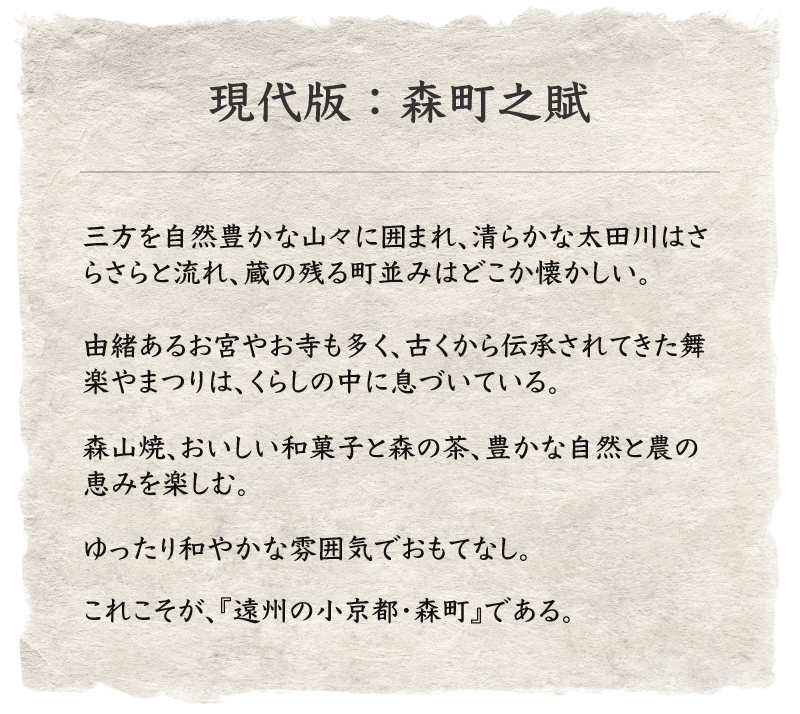
The legacy of the "Little Kyoto of Enshu" is portrayed in "Mori-machi no Fu",
a poem that praises the modern scenery of Mori. In imitation of this "Mori-machi no Fu", the
image of "Mori: Little Kyoto of Enshu" envisioned by its residents and visitors to the town has
been published as "Mori-machi no Fu: The Modern Version".
 We will protect and promote for the next generation the culture and traditions
that live on in the town, the people, and the artifacts of Mori-machi, which are reminiscent
with Kyoto.
We will protect and promote for the next generation the culture and traditions
that live on in the town, the people, and the artifacts of Mori-machi, which are reminiscent
with Kyoto.
Furthermore, we will carefully nurture our legacy as the "Little Kyoto of Enshu". In a rich natural environment, we will makes use of Mori Tea, Jiro persimmons, corn, and other blessings of agriculture, as well as Japanese confections and Moriyama Pottery to build a town that offers hospitality with the town, the people, the artifacts, and the bonds of Mori.
 We will protect and promote for the next generation the culture and traditions
that live on in the town, the people, and the artifacts of Mori-machi, which are reminiscent
with Kyoto.
We will protect and promote for the next generation the culture and traditions
that live on in the town, the people, and the artifacts of Mori-machi, which are reminiscent
with Kyoto. Furthermore, we will carefully nurture our legacy as the "Little Kyoto of Enshu". In a rich natural environment, we will makes use of Mori Tea, Jiro persimmons, corn, and other blessings of agriculture, as well as Japanese confections and Moriyama Pottery to build a town that offers hospitality with the town, the people, the artifacts, and the bonds of Mori.









